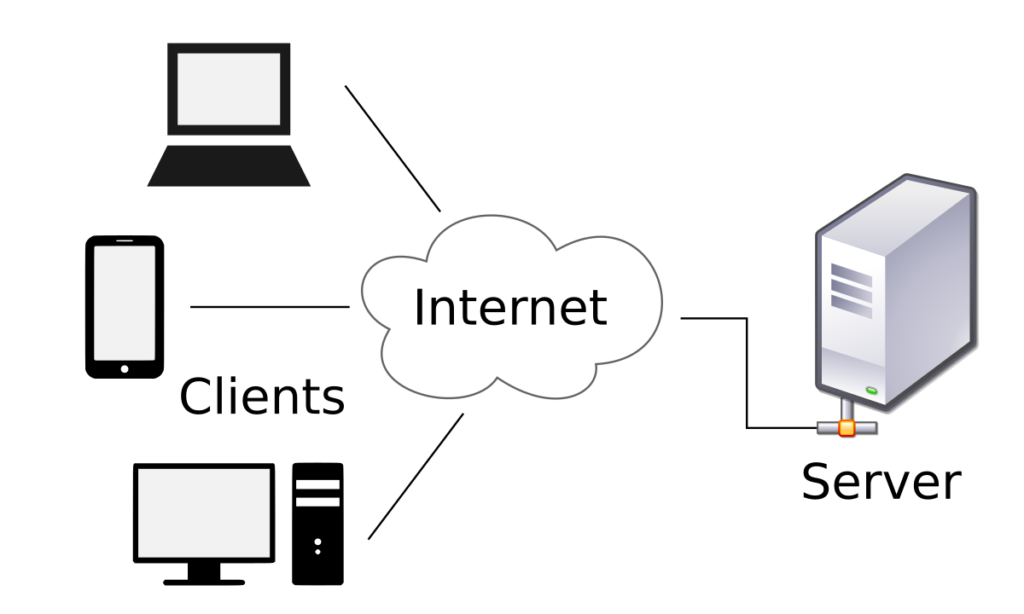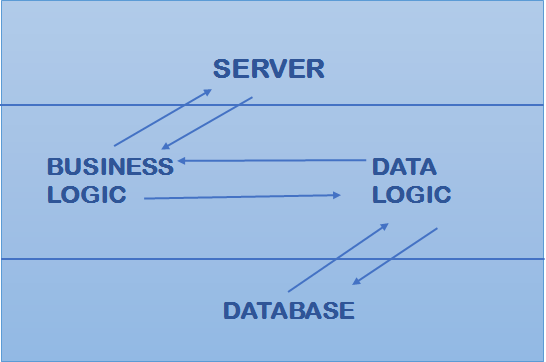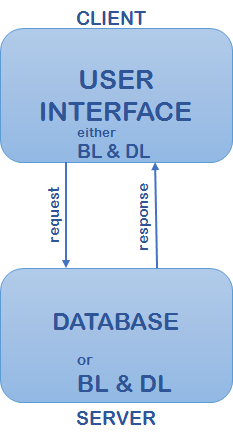Client-server architecture is a network model where every process or computer on a network is a server or a client. The client-servers are the robust computers that are dedicated to managing the printers, disk drives, and network traffic. Clients are workstations or PCs on which the users run their applications. Clients mainly rely on the servers for resources, like devices, files, and processing power.
What is Client-Server Architecture?
A client-server architecture or model is an application network separating tasks between the clients and servers that live in the same system or have to communicate through a computer network. The server-client mainly relies on sending the request to another program to access the service made accessible by the server. This server runs a few programs that share the resources with & distribute work among the clients.
A client-server relationship corresponds to the request–response pattern and should adhere to the common communications procedure that defines the language, rules, or dialog patterns used. The client-server communication adheres to TCP or IP protocol suite.
The TCP protocol maintains the connection until a client/server has completed their message exchange. And TCP protocol decides the best method to distribute the application data in packets that networks will deliver, transfers the packets to and get packets from a network, and manages the flow control or retransmission of the dropped and garbled packets. Internet Protocol is the connectionless protocol where every packet traveling on the Internet is the independent data unrelated to other data units.
How Does Client-Server Architecture Works?

Now let us go ahead and look at how the Internet works through web browsers.
Client: The word Client means an organization or an individual using a service. Even in the digital world Client is a Host (computer) that can receive information or using service from the Servers.
Server: Server means a person that serves something. The server, in the digital world, is the remote computer that offers information or access to services.
So, it is basically a Client requesting something & a Server serving it providing its presence in a database.
Types of Client-Server Architecture
1-Tier Architecture

All client or server configuration settings, UI environment, data logic, as well as marketing logic are there on the same system. The 1-tier architecture services are quite reliable but tough tasks to handle as they have all data in various variance that will be allotted the complete replication of the whole work. 1-Tier architecture also has different layers.
For example –Business, Presentation, Data Access layer using a single software package. Data will be saved on a local machine. Some applications manage 3 tiers like an MP3 player and MS Office; however, these applications are presented in a 1-tier architecture system.
2-Tier Architecture

In 2-Tier Architecture, the UI is stored at the client machine, and the database gets stored on a server. The business logic and database logic are filed at server or client but have to be well-maintained. Suppose Data Logic and Business Logic are collected at the client-side, it’s called fat client-server architecture. Suppose Data Logic and Business Logic are handled on a server, its thin client-server architecture. It is considered affordable.
In 2-Tier architecture, server and client need to come in the direct incorporation. Suppose a client provides any input to a server there must not be any intermediate. It is generally done for rapid results and to avoid confusion between various clients. For example, an online ticket reservations application uses this 2-Tier architecture.
3-Tier Architecture

It consists of the presentation tier that is the User Interface layer, an application tier that is a service layer, which performs the detailed processing, and a data tier that consists of the database server, which stores information. Three-tier architecture can be split into 3 parts, the presentation layer (or Client Tier), the Application layer (or Business Tier), and the Database layer (or Data Tier). It works in the following ways: The Client system handles the Presentation layer; the Application server looks after the Application layer, and the Server system supervises the Database layer.
N-Tier Architecture

Last but not the least, N-Tier architecture is known as a “Multitier Architecture”, hence its scaled form of the 3-tier architecture. The whole presentations, app processing, and even data management features are isolated from one another in this architecture.
Advantages of Client-Server Architecture
- Cost-efficient needs less maintenance cost & Data recovery is made possible.
- The capacity of the Client/Servers will be changed separately.
- Centralized system with data in one single place.
Disadvantages of Client-Server Architecture:
- Clients can be prone to viruses, worms, and Trojans if present in a Server/uploaded in the Server.
- The server can be prone to Denial of Service attacks.
- Data packets will be modified or spoofed during the transmission.
- Phishing and capturing login credentials and other useful info of user are quite common and Man in a Middle attack will be common.
Examples of Client-Server Architecture
There’re different examples of the client-server model in daily life. Given are a few client-server examples-
- Mail Servers: Email servers can be used for sending & receiving emails. Different software allows email handling.
- File Servers: They are the centralized location for the files. For example, cloud services for Microsoft Office and Google docs will be accessed from your devices, and files that you save from the computer will be accessed from your phone. In this way, file stores will be centralized and accessed by multiple clients.
- Web Servers: These servers will host different websites and these are high-performance computers where websites get hosted. The client is using, and the web server is a server system, which hosts these websites. The user or client requests resources or server’s site data through high-speed internet.
Final Words
In the client-model computing, the centralized communications server, the model is a central node, which communicates with client nodes. The major benefit that the client and server relationship has on the P2P peer relationship is the ability of handling data and apps on a centralized server.
